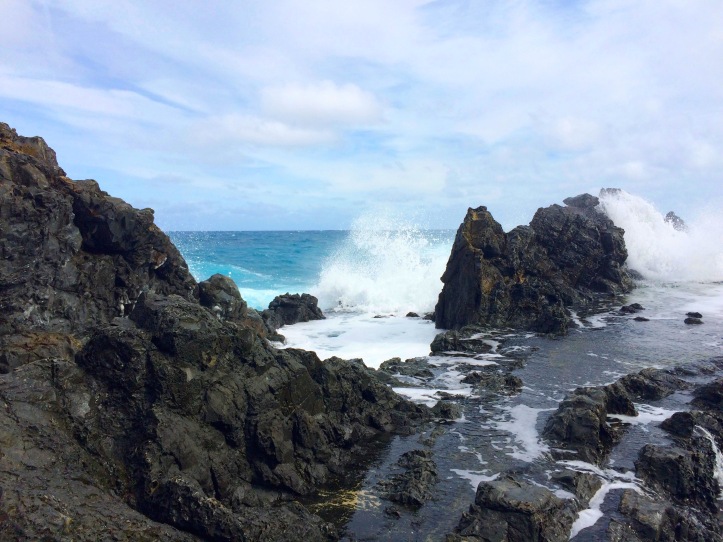Last week, a handful of scientists from the Center for Sustainable Nanotechnology had the chance to visit Hawai’i for a once-every-five-years chemistry conference called Pacifichem. A few of us had a chance to go kayaking to the Mokulua (Twin Islands) near Kailua, O’ahu. While walking around Moku Nui, we had a chance to observe and discuss the chemistry involved in a common island phenomenon: sea foam.

Sea foam occurs naturally when seawater is agitated by wind and waves, and when crashing onto rocks (see above). It is composed of water, air, and naturally occurring organic compounds from phytoplankton and macroalgae (e.g., kelp). These organisms produce surface active agents (surfactants) that stabilize bubbles, leading to the formation of foam. One study found that sea foam near kelp beds off the coast of South Africa contained 23% protein, 11% lipids, and 3% carbohydrates.1
Wherever you happen to be in the world, happy winter holidays from the Center for Sustainable Nanotechnology!
REFERENCE
1. Velimirov, B. Formation and potential trophic significance of marine foam near kelp beds in the Benguela upwelling system. Marine Biology 1980, 58, 311-318.

Good to see this kind of conference is taking place and this will surely help our society and nature
I am better for having read this.